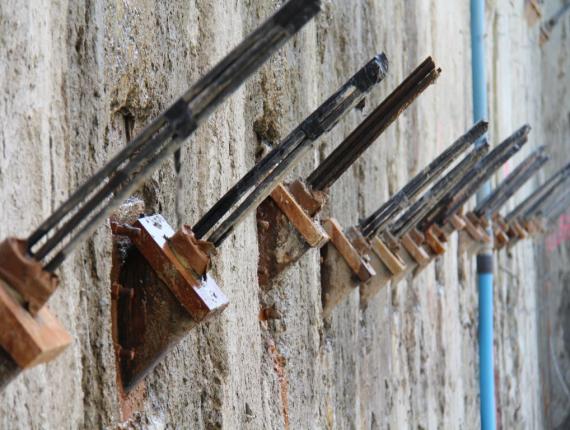Reinforced
Soil Design

Reinforced Soil Design
Reinforced soil design is a technique used to reinforce the soil with tensile elements to improve its load-bearing capacity. Reinforced soil structures can be cost-effective and require less excavation and material than traditional construction methods, making it a popular choice for retaining walls, bridge abutments, and other infrastructure projects.
Reinforced soil design is a method used to enhance the stability and load-bearing capacity of soil structures, such as retaining walls, slopes, and embankments, by incorporating reinforcements.
Cost-effective alternative to traditional engineering solutions
In this type of reinforced soil, geogrids are used to reinforce the soil. Geogrids are made of high-strength polymers and are placed horizontally or vertically in the soil.
Geotextile-reinforced soil is similar to geogrid-reinforced soil, but instead of geogrids, geotextiles are used. Geotextiles are permeable fabrics made of synthetic fibers.
Geocell-reinforced soil uses a network of interconnected cells filled with soil to create a stable structure. Geocells are typically made of high-density polyethylene.
Gabion-reinforced soil involves the use of wire mesh cages filled with stones or concrete to create a retaining wall. The gabions provide reinforcement to the soil and prevent erosion.
Soil-nailing involves drilling holes into the soil and inserting steel bars or other reinforcing elements. The holes are then filled with grout or cement, creating a reinforced soil structure.
Grouting is the process of injecting a liquid or semi-solid material into the soil to improve its strength and stability. This can be done by injecting cement grout, chemical grout, or other materials into the soil.
Soil reinforcement grids are made from a variety of materials, such as plastic or steel, and are placed within the soil to provide additional support. They can be used to reinforce embankments, stabilize slopes, and prevent soil erosion.


Key aspects of Reinforced soil
- Site Investigation:
Detailed site investigation is necessary to assess the soil properties, including shear strength, permeability, and compaction characteristics.
- Load Analysis:
The loads acting on the structure, such as earth pressure, surcharge, or traffic loads, are analyzed. The magnitude, distribution, and direction of the loads are considered to determine the required strength and stability of the reinforced soil structure.
- Reinforcement Selection:
Various reinforcement materials can be used, such as geotextiles, geogrids, or geocells.
The selection of the reinforcement depends on factors such as the soil type, design loads, and desired performance.
- Design Calculations:
To determine the appropriate spacing, length, and embedment depth of the reinforcement elements.
Factors such as soil characteristics, loads, and desired safety factors are considered in the calculations. Computer software programs may be utilized to assist in the design process.
Why Choose Us?
Dr. Abhinav Mane has done extensive research on the reinforced soil and his expertise enables us to offer most reliable services in the field of soil reinforcement. Under his esteemed guidance, we will be capable to assess the site conditions, evaluate the soil properties, and recommend the appropriate reinforcement materials and design parameters for the specific project.


